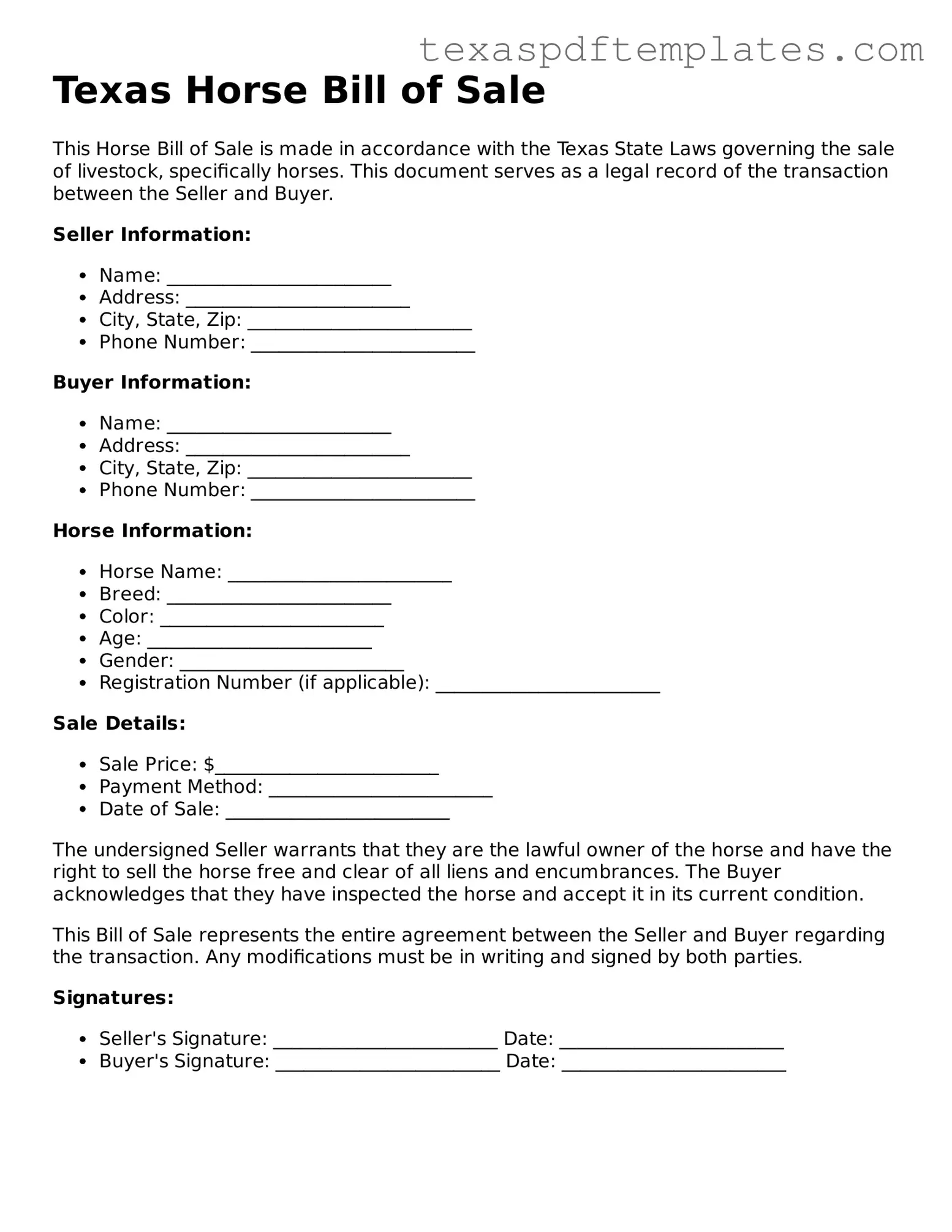Texas Horse Bill of Sale
This Horse Bill of Sale is made in accordance with the Texas State Laws governing the sale of livestock, specifically horses. This document serves as a legal record of the transaction between the Seller and Buyer.
Seller Information:
- Name: ________________________
- Address: ________________________
- City, State, Zip: ________________________
- Phone Number: ________________________
Buyer Information:
- Name: ________________________
- Address: ________________________
- City, State, Zip: ________________________
- Phone Number: ________________________
Horse Information:
- Horse Name: ________________________
- Breed: ________________________
- Color: ________________________
- Age: ________________________
- Gender: ________________________
- Registration Number (if applicable): ________________________
Sale Details:
- Sale Price: $________________________
- Payment Method: ________________________
- Date of Sale: ________________________
The undersigned Seller warrants that they are the lawful owner of the horse and have the right to sell the horse free and clear of all liens and encumbrances. The Buyer acknowledges that they have inspected the horse and accept it in its current condition.
This Bill of Sale represents the entire agreement between the Seller and Buyer regarding the transaction. Any modifications must be in writing and signed by both parties.
Signatures:
- Seller's Signature: ________________________ Date: ________________________
- Buyer's Signature: ________________________ Date: ________________________
